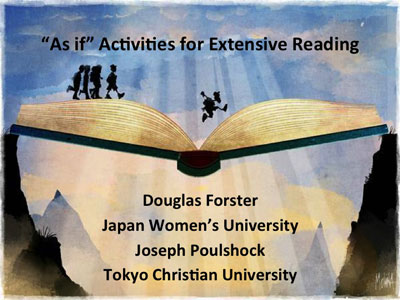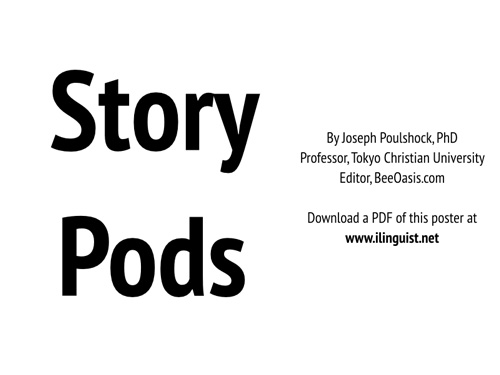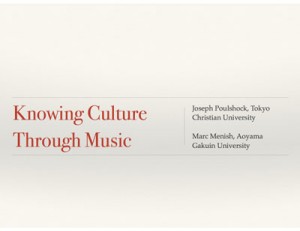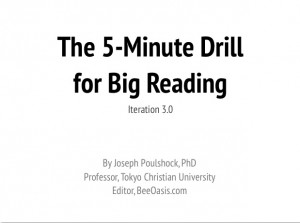Presentation for the Seventh Annual Extensive Reading Seminar, Sunday September 28, 2014 Keisen University, Tokyo Japan.
Click the image to download the PDF.
The Philosopher William James (1884) argued for what is today called the “As If principle,” (AIP) that if you behave as if you are a certain kind of person, you become that person. Decades of modern research show that the AIP is a dynamic theory of psychology.
In this short paper, the authors demonstrate seven practical activities that apply the AIP to motivate students to do extensive reading: (1) A Picture of Reading; (2) Colored Wristbands; (3) Happy Mirror Reading; (4) Happy Talk; (5) Three Minute Drill; (6) Reading Posters; (7) The Confidence Trick.
Besides these activities, authors discuss ways to research the efficacy of the AIP (giving details of that research in a separate presentation).




